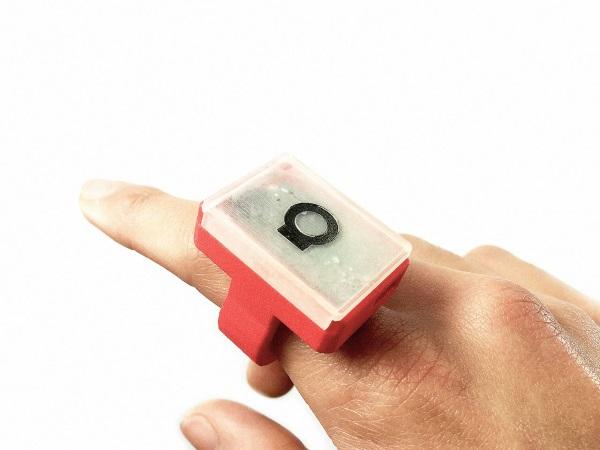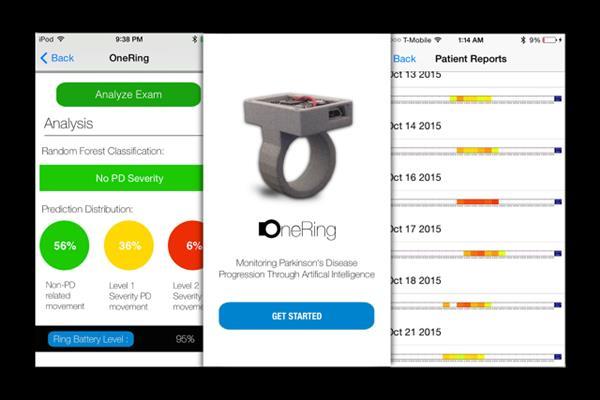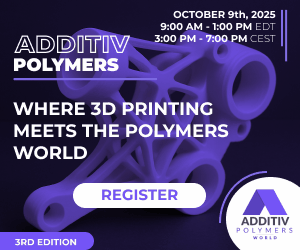OneRing: 15-Year-Old Student 3D Prints Wearable Device to Help Monitor the Symptoms of Parkinson’s Disease
In the United States alone, nearly one million people are living with Parkinson’s disease, a chronic and progressive movement disorder, which causes the death of nerve cells in the brain that are vital to our movement and coordination. Currently, there is no known cause or cure for Parkinson’s disease, though there are a number of pharmaceuticals and surgical procedure that can help manage the continually worsening symptoms, which include body tremors, bradykinesia (slowness of movement), rigidity, and impaired balance. As researchers continue to battle for a more solid answer to this devastating disorder, one high school sophomore from Cupertino, California, named Utkarsh Tandon, is attempting to revolutionize Parkinson’s treatment with his OneRing project.
After volunteering his time at a local Parkinson’s institute over the summer break, the 15-year-old student realized that these Parkinson’s patients needed a better way to help monitor the progression of their disorder. In order to make this possible, Tandon utilized 3D printing technology and a microchip to create the OneRing, a wearable device that monitors the patient’s symptoms and generates the data to help doctors prescribe the proper medication.
Tandon launched a Kickstarter to help fund the production of his OneRing project, which raised $3,590 with the help of 64 backers. Since exceeding his original crowdfunding goal of $1,500, Tandon has been working to provide Parkinson’s clinics around the US with variously sized OneRing devices, as well as the corresponding iOS app, OneRing – Artificial Intelligence for Parkinson’s Disease.
“OneRing is a novel tool for monitoring Parkinson’s disease,” Tandon wrote on his Kickstarter page. “Its intelligent machine learning technology has been trained to model various Parkinson’s movement patterns including dyskinesia, bradykinesia, and tremor in order to generate smart patient reports on a daily basis. These reports provide physicians with time-stamped analytics about their patient’s movement severity at each hour of the day; allowing them to better prescribe medications.”
 While the first device prototype was designed to wrap around the wrist, Tandon soon remodeled the device into a wearable ring. The student was able to create the current functional prototypes at a relatively low price; according to the Kickstarter campaign, each OneRing is comprised of about $18 worth of 3D printed components, as well as a $45 Low Energy Bluetooth Microchip. The microchip connects to the iOS app via Bluetooth, which analyzes the collected data and generates an informed report for both the Parkinson’s patient and their doctor. To produce accurate and timely reports, the OneRing utilizes a signal processing engine and machine learning algorithms.
While the first device prototype was designed to wrap around the wrist, Tandon soon remodeled the device into a wearable ring. The student was able to create the current functional prototypes at a relatively low price; according to the Kickstarter campaign, each OneRing is comprised of about $18 worth of 3D printed components, as well as a $45 Low Energy Bluetooth Microchip. The microchip connects to the iOS app via Bluetooth, which analyzes the collected data and generates an informed report for both the Parkinson’s patient and their doctor. To produce accurate and timely reports, the OneRing utilizes a signal processing engine and machine learning algorithms.
Though Tandon is currently working towards supplying clinics with the current OneRing design, he is also developing a new model that is 3D printed with a flexible plastic material, and plans to recreate it into one-size-fits-all device. This isn’t the first time that 3D printing technology has played a role in combating Parkinson’s disease. In the past, a 3D printing approach was researched by the Deakin University and the Mayo Clinic for its ability to create biocompatible devices for Deep Brain Stimulation (DBS), while a realistic 3D printed brain model was used by University of Saskatchewan’s Dr. Ivar Mendez to help prepare for DBS procedure. But the 15-year-old’s wearable device is one that truly stands to benefit the millions of lives that are afflicted by this chronic and progressive disability, granting these patients and their doctors with vital information that will help combat the ongoing struggle with Parkinson’s disease. Do you think this device has potential? Discuss in the 3D Printed OneRing forum over at 3DPB.com.
[Source/Images: Shapeways and OneRing via Kickstarter campaign]Subscribe to Our Email Newsletter
Stay up-to-date on all the latest news from the 3D printing industry and receive information and offers from third party vendors.
Print Services
Upload your 3D Models and get them printed quickly and efficiently.
You May Also Like
Nikon Advanced Manufacturing Partners with the US Navy for the Maritime Industrial Base
Following the recent announcement that Velo3D has partnered with the US Navy for the Maritime Industrial Base (MIB), now Nikon Advanced Manufacturing is doing the same. One Nikon SLM Solutions...
3DPOD 270: Hamid Zarringhalam, CEO Nikon Advanced Manufacturing
Hamid Zarringhalam rose through the ranks of Nikon‘s precision manufacturing unit. He’s now a Corporate Vice President at Nikon and the CEO of Nikon Advanced Manufacturing and Nikon Ventures. We’re...
3D Printing News Briefs, July 23, 2025: ASTM Standard, Defense, Bioinks, & More
We’re starting with business news in today’s 3D Printing News Briefs, as Nikon AM Synergy has appointed a new CEO. Moving on, a proposed ASTM International standard will support 3D...
From Concept to Reality: Nikon AM CEO Hamid Zarringhalam on Executing a Metal 3D Printing Strategy
There are countless metrics you can use, whether quantitative or qualitative, to judge the success of an organization. One of the most important may simply be the organization’s ability to...

































